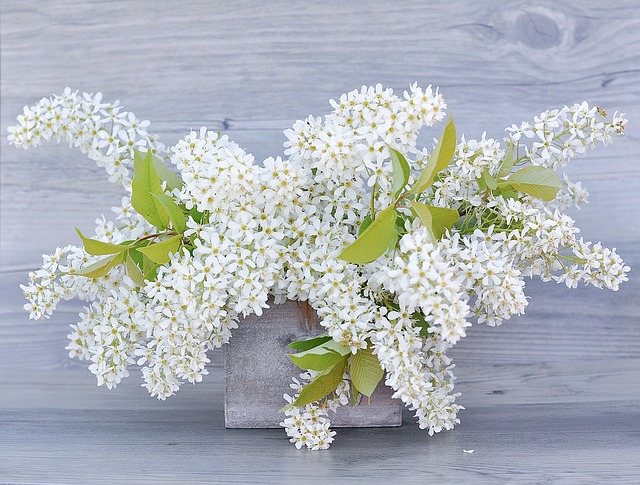
Bird Cherry
is a tree or massive shrub 5-8m tall, with brown scaly bark and white-yellow pores. Leaves (6-15cm long, 2.5-5cm wide), on short stalks, arranged alternately, oval or elongated, pointed at the ends, rounded at the base - wedge-shaped. A couple of glands are visible where the petiole joins the leaf. The flowers are white and aromatic (1-1.5cm in diameter), collected in dense inflorescences. The fruit is a drupe (6-7 mm in diameter) with a strongly astringent taste. The entire surface part of the plant has a characteristic bitter smell. The plant blooms in April-May. The fruits ripen in August-September.
In scientific medicine, the fruits of
Bird Cherry
are used for medicinal purposes, which are harvested when they are fully ripe. Ripe berries are collected in dry weather, separated from impurities (leaves, berry stalks) and dried in the sun or in forced dryers not exceeding 40-50C. It is important to know that the seeds must remain healthy so that they do not release amygdalin, which can cause poisoning, becoming benzaldehyde, hydrocyanic acid and glucose as a result of fermentation. The drug can be stored for up to 5 years.
Flowers, leaves and bark are also used for medicinal purposes. The bark is collected in early spring, it is dried in a well-ventilated and shaded place or in forced dryers, not exceeding a temperature of 40C. The flowers are collected in May and dried in a well-ventilated and shady place without exposure to high temperatures.
Sugar (<5%), organic acids (<0.57%; malic acid, citric acid), tannins (<0.48%), dyes, vitamin C, carotene, micro and macro elements (mostly cobalt and copper) are found in the fruit pulp of
Bird Cherry
. The seeds contain <1.5% of the glycoside amygdalin, which is hydrolyzed to hydrocyanic acid. The leaves contain ascorbic acid (~200mg%), hydrocyanic acid (<0.06%), glycosides amygdalin and prunosin (gives the plant its aroma). The bark of the plant contains amygdalin (<2%), free hydrocyanic acid (~0.1%), glycoside prulaurasin, tannins (<3%). All parts of the plant contain phytoncides, which cause the death of various microbes and multicellular organisms. Due to the phytoncidal properties of
Bird Cherry, ticks also avoid it. It is believed that the phytoncide properties of yves are mainly caused by hydrocyanic acid, a substance that blocks the absorption of oxygen in tissues.
Medicinal significance
Bird Cherry
fruits are used in the form of decoctions to treat diarrhea and non-infectious diarrhea. It also treats other disorders of the digestive tract. The basic pharmacological properties are provided by tannins present in the plant - condensed tannins, which are present in the berries. In addition, the fruit also contains the cyanogenic glycoside amygdalin, which can produce antitumor effects in low concentrations.
Bird Cherry
fruits have a bactericidal, anti-inflammatory and vitamin effect, they normalize the functioning of the digestive tract. Anthocyanins have vitamin P activity and strengthen blood capillaries.
Bird Cherry
bark has antipyretic and antiperspirant properties. The leaves have vitamin effects, the flowers have anti-inflammatory, phytoncide and wound-healing effects.
Bird Cherry
is also used in folk medicine. If in official medicine, usually only fruits are used, then in folk medicine, flowers, leaves and barks are also widely used.
A bark decoction is used as a diaphoretic, diuretic, and anti-diarrheal agent. Externally, a decoction of the bark is used to treat eye diseases. Bark solution is used in case of radiculitis - for rubbing.
The leaves are used in tea or infusion for lung and bronchial inflammation, rheumatism and colds. A decoction of the leaves is also used as a mouthwash to treat the mucous membranes of the mouth. Whole leaves are usually placed on hernias.